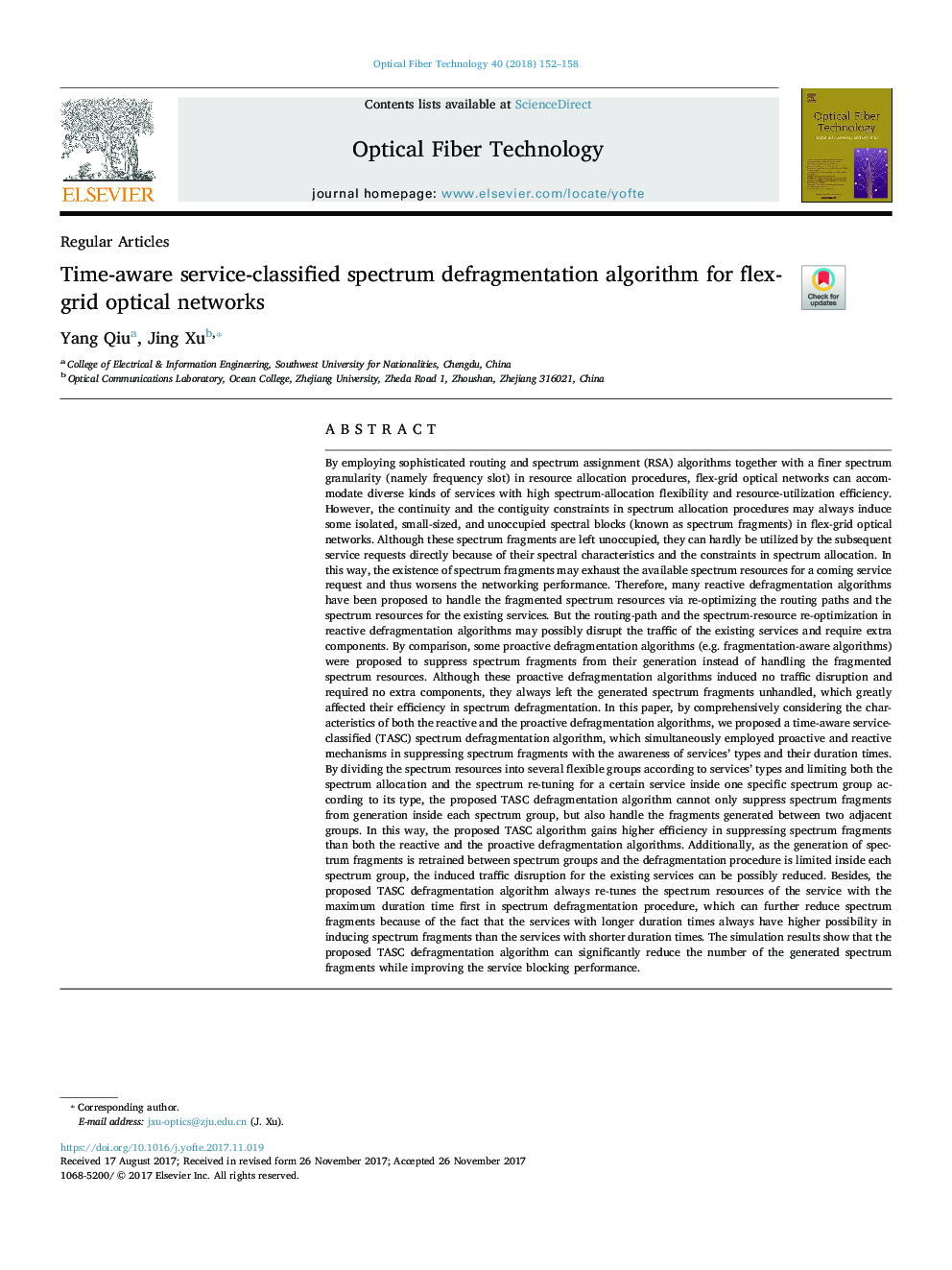| کد مقاله | کد نشریه | سال انتشار | مقاله انگلیسی | نسخه تمام متن |
|---|---|---|---|---|
| 6888372 | 1444923 | 2018 | 7 صفحه PDF | دانلود رایگان |
عنوان انگلیسی مقاله ISI
Time-aware service-classified spectrum defragmentation algorithm for flex-grid optical networks
ترجمه فارسی عنوان
الگوریتم فراصوت طیفی طبقه بندی شده برای سرویس شبکه های نوری فشرده شبکه ای است که به سرعت در حال افزایش است
دانلود مقاله + سفارش ترجمه
دانلود مقاله ISI انگلیسی
رایگان برای ایرانیان
موضوعات مرتبط
مهندسی و علوم پایه
مهندسی کامپیوتر
شبکه های کامپیوتری و ارتباطات
چکیده انگلیسی
By employing sophisticated routing and spectrum assignment (RSA) algorithms together with a finer spectrum granularity (namely frequency slot) in resource allocation procedures, flex-grid optical networks can accommodate diverse kinds of services with high spectrum-allocation flexibility and resource-utilization efficiency. However, the continuity and the contiguity constraints in spectrum allocation procedures may always induce some isolated, small-sized, and unoccupied spectral blocks (known as spectrum fragments) in flex-grid optical networks. Although these spectrum fragments are left unoccupied, they can hardly be utilized by the subsequent service requests directly because of their spectral characteristics and the constraints in spectrum allocation. In this way, the existence of spectrum fragments may exhaust the available spectrum resources for a coming service request and thus worsens the networking performance. Therefore, many reactive defragmentation algorithms have been proposed to handle the fragmented spectrum resources via re-optimizing the routing paths and the spectrum resources for the existing services. But the routing-path and the spectrum-resource re-optimization in reactive defragmentation algorithms may possibly disrupt the traffic of the existing services and require extra components. By comparison, some proactive defragmentation algorithms (e.g. fragmentation-aware algorithms) were proposed to suppress spectrum fragments from their generation instead of handling the fragmented spectrum resources. Although these proactive defragmentation algorithms induced no traffic disruption and required no extra components, they always left the generated spectrum fragments unhandled, which greatly affected their efficiency in spectrum defragmentation. In this paper, by comprehensively considering the characteristics of both the reactive and the proactive defragmentation algorithms, we proposed a time-aware service-classified (TASC) spectrum defragmentation algorithm, which simultaneously employed proactive and reactive mechanisms in suppressing spectrum fragments with the awareness of services' types and their duration times. By dividing the spectrum resources into several flexible groups according to services' types and limiting both the spectrum allocation and the spectrum re-tuning for a certain service inside one specific spectrum group according to its type, the proposed TASC defragmentation algorithm cannot only suppress spectrum fragments from generation inside each spectrum group, but also handle the fragments generated between two adjacent groups. In this way, the proposed TASC algorithm gains higher efficiency in suppressing spectrum fragments than both the reactive and the proactive defragmentation algorithms. Additionally, as the generation of spectrum fragments is retrained between spectrum groups and the defragmentation procedure is limited inside each spectrum group, the induced traffic disruption for the existing services can be possibly reduced. Besides, the proposed TASC defragmentation algorithm always re-tunes the spectrum resources of the service with the maximum duration time first in spectrum defragmentation procedure, which can further reduce spectrum fragments because of the fact that the services with longer duration times always have higher possibility in inducing spectrum fragments than the services with shorter duration times. The simulation results show that the proposed TASC defragmentation algorithm can significantly reduce the number of the generated spectrum fragments while improving the service blocking performance.
ناشر
Database: Elsevier - ScienceDirect (ساینس دایرکت)
Journal: Optical Fiber Technology - Volume 40, January 2018, Pages 152-158
Journal: Optical Fiber Technology - Volume 40, January 2018, Pages 152-158
نویسندگان
Yang Qiu, Jing Xu,
